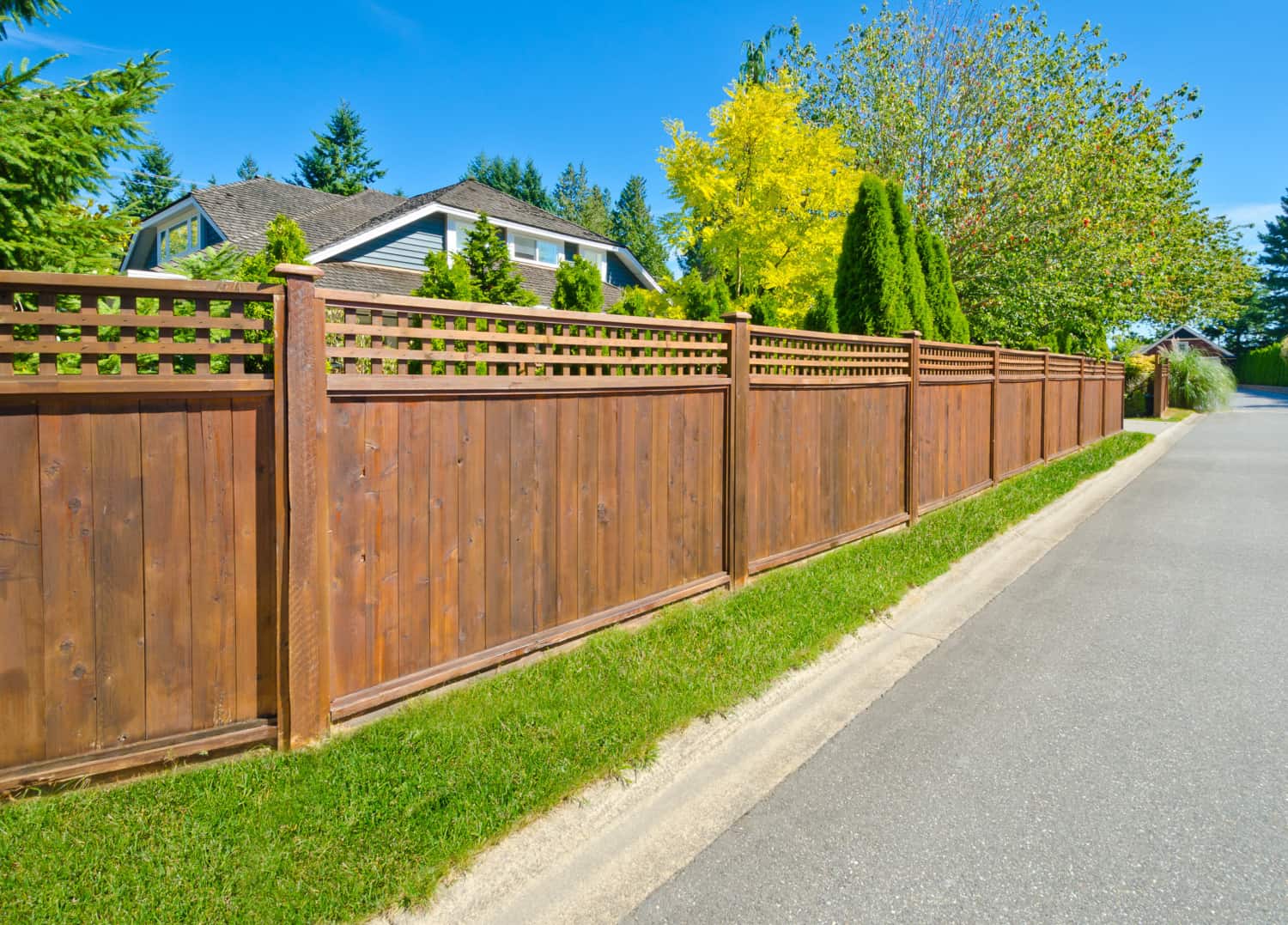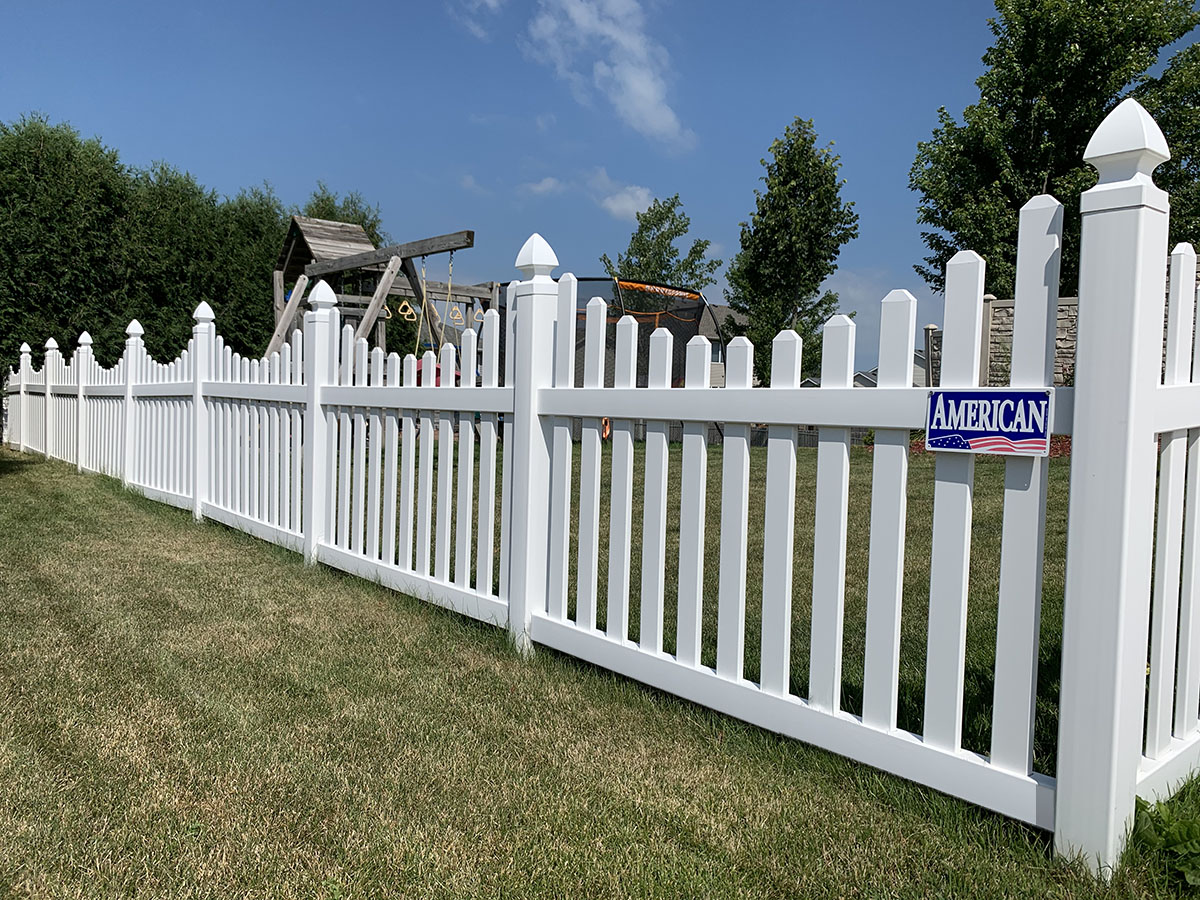All Categories
Featured
Keeping your fence is necessary to ensure its performance, look, and durability. Whether your fence is made of wood, plastic, metal, or various other products, comprehending its care requirements will help keep it in optimum problem.
![]()
Cleansing: Utilize a stress washer or soapy water with a soft brush to get rid of algae, mold, and dust. This ought to be done annually or biannually. Tarnishing and Securing: Apply a sealant or discolor every 2-- 3 years to avoid dampness damages and UV fading. Choose a top notch item suitable for exterior usage. Repair services: Change deformed, deteriorated, or broken boards immediately to prevent further damage. Pest Administration: Treat with a wood chemical to secure against termites and various other pests. 2. Vinyl Fencings. Vinyl fences are popular for their low-maintenance nature however still call for some upkeep.
Cleaning: Wash the fence with a mixture of water and moderate cleaning agent utilizing a soft sponge or towel. Avoid abrasive cleaners that might scrape the surface area. Inspections: Check for spaces or fractures regularly, especially after storms. Vinyl can become brittle in incredibly cold weather. Preventing Staining: Get rid of spots immediately. For difficult discolorations, utilize a vinegar option or a vinyl-safe cleansing agent. 3. Chain-Link Fences. Chain-link fencings are practical and durable, typically made use of for protection and boundary marking.
Rust Elimination: Check for corrosion frequently, especially in seaside or humid areas. Eliminate rust with a cable brush and apply a rust-proof coating. Cleansing: Rinse with water to remove dust and debris. Make use of a scrub brush for areas with heavy accumulation. Tightening up and Repairs: Guarantee the blog posts and links remain limited. Change harmed areas or equipment as required. 4. Wrought Iron Fences. Wrought iron uses a sophisticated look yet needs regular interest to avoid rust and keep its finish.
Corrosion Avoidance: Sand off any type of rust places and apply a rust-resistant guide and paint. This should be done every year or as needed. Cleaning: Use a mild soap service and a soft cloth or sponge to get rid of dust. Stay clear of severe chemicals that might damage the metal. Paint: Reapply paint every couple of years to protect the iron and enhance its look. 5. Light weight aluminum Fences. Aluminum fences are lightweight, corrosion-resistant, and call for very little treatment.
![]()
Cleansing: Use soapy water and a fabric to clean up the fencing, washing completely to prevent streaks. Inspections: Look for loosened screws or panels periodically. If necessary, protect or replace components. Touch-Ups: Usage paint made for aluminum to cover any chips or scratches, securing the metal underneath. 6. Composite Fences. Compound fence is made from recycled products, integrating the look of wood with better durability.
Cleansing: Rinse with water and utilize a light detergent to remove dirt and discolorations. Avoid abrasive tools that may damage the composite surface. Inspections: Look for indicators of warping or cracking, especially in locations with severe temperature level modifications. Mold Avoidance: Tidy mold or mildew without delay with a combination of water and white vinegar. 7. Bamboo Fences. Bamboo fence is environment-friendly but much more delicate than various other products.
Cleaning: Use a soft brush with soapy water to tidy dirt and particles. Prevent using too much water pressure to stop splitting. Securing: Apply a water-resistant sealer every 2-- 3 years to secure against weather condition damages. Repairs: Change cracked or damaged bamboo poles as needed to preserve the structure and look. General Maintenance Tips. Trim Plant Life: Keep creeping plants and bushes far from the fencing to avoid moisture build-up and damages. Seasonal Care: In winter, clear snow build-up from fences to avoid stress on the structure. In summertime, check for sun damages or fading. Routine Inspections: Stroll along the fencing line occasionally to look for loosened equipment, leaning areas, or various other signs of wear. Final thought. Regardless of the kind of fence product, routine upkeep is the key to preserving its function and appearances. Wood fences demand the most upkeep, while plastic and aluminum call for less effort yet still benefit from regular cleansing and examinations. By dealing with small concerns early and performing routine care, you'll delight in a fence that continues to be tough and attractive for several years to come.

- Wooden Fences. Wooden fencings are traditional yet require normal like shield versus weather and pests.
Cleansing: Utilize a stress washer or soapy water with a soft brush to get rid of algae, mold, and dust. This ought to be done annually or biannually. Tarnishing and Securing: Apply a sealant or discolor every 2-- 3 years to avoid dampness damages and UV fading. Choose a top notch item suitable for exterior usage. Repair services: Change deformed, deteriorated, or broken boards immediately to prevent further damage. Pest Administration: Treat with a wood chemical to secure against termites and various other pests. 2. Vinyl Fencings. Vinyl fences are popular for their low-maintenance nature however still call for some upkeep.
Cleaning: Wash the fence with a mixture of water and moderate cleaning agent utilizing a soft sponge or towel. Avoid abrasive cleaners that might scrape the surface area. Inspections: Check for spaces or fractures regularly, especially after storms. Vinyl can become brittle in incredibly cold weather. Preventing Staining: Get rid of spots immediately. For difficult discolorations, utilize a vinegar option or a vinyl-safe cleansing agent. 3. Chain-Link Fences. Chain-link fencings are practical and durable, typically made use of for protection and boundary marking.
Rust Elimination: Check for corrosion frequently, especially in seaside or humid areas. Eliminate rust with a cable brush and apply a rust-proof coating. Cleansing: Rinse with water to remove dust and debris. Make use of a scrub brush for areas with heavy accumulation. Tightening up and Repairs: Guarantee the blog posts and links remain limited. Change harmed areas or equipment as required. 4. Wrought Iron Fences. Wrought iron uses a sophisticated look yet needs regular interest to avoid rust and keep its finish.
Corrosion Avoidance: Sand off any type of rust places and apply a rust-resistant guide and paint. This should be done every year or as needed. Cleaning: Use a mild soap service and a soft cloth or sponge to get rid of dust. Stay clear of severe chemicals that might damage the metal. Paint: Reapply paint every couple of years to protect the iron and enhance its look. 5. Light weight aluminum Fences. Aluminum fences are lightweight, corrosion-resistant, and call for very little treatment.

Cleansing: Use soapy water and a fabric to clean up the fencing, washing completely to prevent streaks. Inspections: Look for loosened screws or panels periodically. If necessary, protect or replace components. Touch-Ups: Usage paint made for aluminum to cover any chips or scratches, securing the metal underneath. 6. Composite Fences. Compound fence is made from recycled products, integrating the look of wood with better durability.
Cleansing: Rinse with water and utilize a light detergent to remove dirt and discolorations. Avoid abrasive tools that may damage the composite surface. Inspections: Look for indicators of warping or cracking, especially in locations with severe temperature level modifications. Mold Avoidance: Tidy mold or mildew without delay with a combination of water and white vinegar. 7. Bamboo Fences. Bamboo fence is environment-friendly but much more delicate than various other products.
Cleaning: Use a soft brush with soapy water to tidy dirt and particles. Prevent using too much water pressure to stop splitting. Securing: Apply a water-resistant sealer every 2-- 3 years to secure against weather condition damages. Repairs: Change cracked or damaged bamboo poles as needed to preserve the structure and look. General Maintenance Tips. Trim Plant Life: Keep creeping plants and bushes far from the fencing to avoid moisture build-up and damages. Seasonal Care: In winter, clear snow build-up from fences to avoid stress on the structure. In summertime, check for sun damages or fading. Routine Inspections: Stroll along the fencing line occasionally to look for loosened equipment, leaning areas, or various other signs of wear. Final thought. Regardless of the kind of fence product, routine upkeep is the key to preserving its function and appearances. Wood fences demand the most upkeep, while plastic and aluminum call for less effort yet still benefit from regular cleansing and examinations. By dealing with small concerns early and performing routine care, you'll delight in a fence that continues to be tough and attractive for several years to come.
Latest Posts
Maximize Your Savings Potential with WyHy MAX Money Market
Published Apr 21, 25
1 min read
Your Roofing System Replacement Trip: A Full Walkthrough
Published Apr 21, 25
1 min read
Montclare Auto Repair: Your Reliable Expert for Brake & Engine Repairs
Published Apr 20, 25
2 min read
More
Latest Posts
Maximize Your Savings Potential with WyHy MAX Money Market
Published Apr 21, 25
1 min read
Your Roofing System Replacement Trip: A Full Walkthrough
Published Apr 21, 25
1 min read
Montclare Auto Repair: Your Reliable Expert for Brake & Engine Repairs
Published Apr 20, 25
2 min read